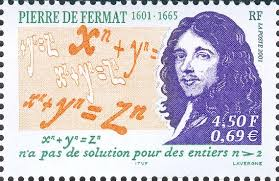Fermat's Calculation of the Area Under y = x^n

Method of Exhaustion
Fermat's approach to integration, also known as the method of exhaustion, was a precursor to modern integral calculus. It involved finding the area under a curve by approximating it with geometric shapes, such as rectangles, and then taking the limit as the number of these shapes approaches infinity. Here's an explanation of Fermat's approach to integration:
1. The Problem: Given a curve, such as y = f(x), the goal is to find the area under the curve between two points x = a and x = b. This area is represented by the definite integral from a to b f(x) dx .
2. Approximation with Rectangles: Fermat's key idea was to approximate the area under the curve by dividing it into smaller rectangles. The more rectangles used, the better the approximation becomes. To do this, Fermat would divide the interval [a, b] into n equal subintervals of width x=.
3. Summing Areas of Rectangles: For each subinterval, Fermat would construct a rectangle with a height equal to the function value at some point within the subinterval. For example, he might choose the left endpoint, right endpoint, or midpoint of the subinterval as the height of the rectangle. The area of each rectangle is then Ai,=f(xi ) * x where xi is the chosen point within the i-th subinterval.
4. Approximate Area Sum: Fermat would sum the areas of all these rectangles to approximate the area under the curve. The sum of the areas of the rectangles is f(xi)*x.
5. Taking the Limit: The key insight of Fermat's method was to recognize that as n approaches infinity (i.e., as the width of the rectangles approaches zero), the sum of the areas of the rectangles approaches the exact area under the curve. This is represented mathematically as the limit n f(xi) * x which is equal to the definite integral from a to b f(x)dx.
6. Generalization: Fermat's approach worked for specific curves and certain functions. However, he did not have a general method for finding the antiderivative of a function to evaluate integrals for arbitrary functions.
Fermat's method of exhaustion was a significant step in the development of integral calculus and laid the groundwork for later mathematicians like Newton and Leibniz to formalize the concept of integration and develop the fundamental principles of modern calculus.